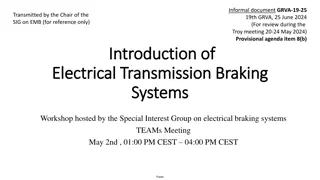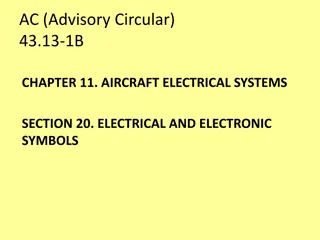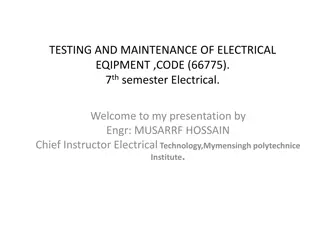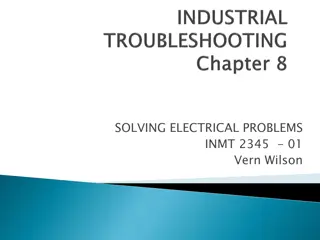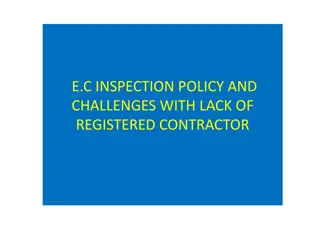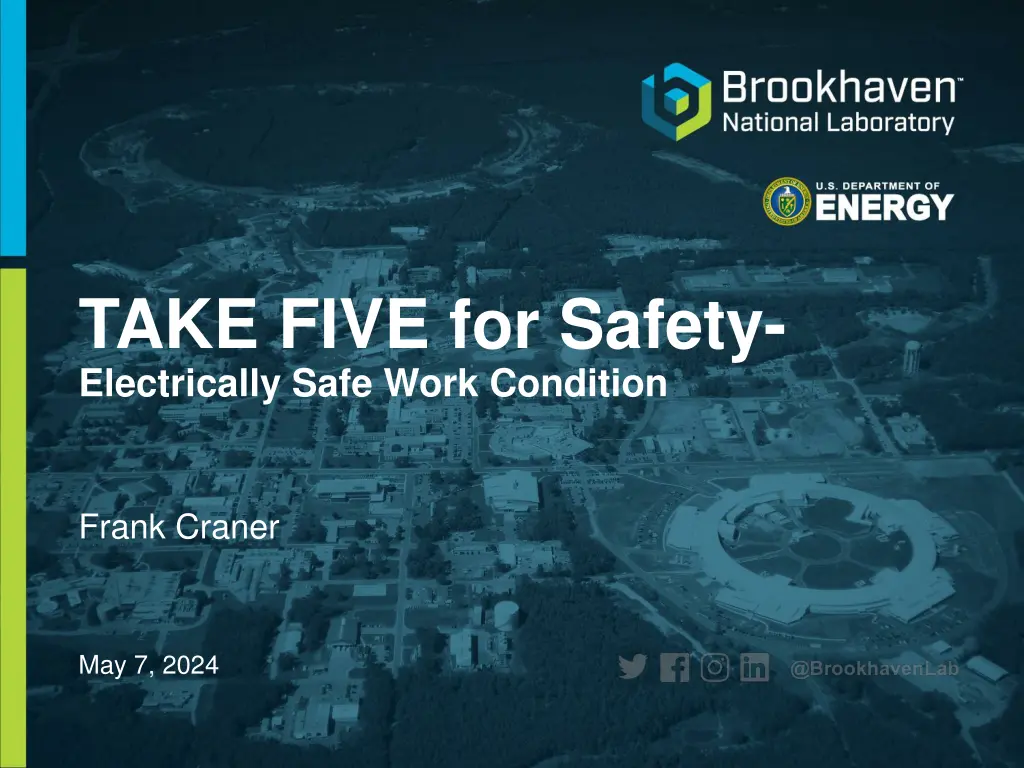
Understanding Electrically Safe Work Conditions
Learn about Electrically Safe Work Conditions as defined by NFPA 70E, including the importance of de-energizing electrical conductors for worker safety. Discover the benefits, procedures, and standards associated with maintaining an Electrically Safe Work Condition to prevent electrical hazards in the workplace effectively.
Download Presentation

Please find below an Image/Link to download the presentation.
The content on the website is provided AS IS for your information and personal use only. It may not be sold, licensed, or shared on other websites without obtaining consent from the author. If you encounter any issues during the download, it is possible that the publisher has removed the file from their server.
You are allowed to download the files provided on this website for personal or commercial use, subject to the condition that they are used lawfully. All files are the property of their respective owners.
The content on the website is provided AS IS for your information and personal use only. It may not be sold, licensed, or shared on other websites without obtaining consent from the author.
E N D
Presentation Transcript
TAKE FIVE for Safety- Electrically Safe Work Condition Frank Craner May 7, 2024
What is an Electrically Safe Work Condition NFPA 70E defines it as a state in which an electrical conductor or circuit part has been: disconnected from energized parts, locked/tagged in accordance with established standards, tested to verify the absence of voltage, and if necessary, temporarily grounded for personnel protection . An Electrically Safe Work Condition is a state wherein all hazardous electrical conductors or circuit parts to which a worker might be exposed are maintained in a de-energized state for the purpose of temporarily eliminating electrical hazards for a period of time for which the state is maintained. 2
More from NFPA 70E The ability of an employee to use personal protective equipment (PPE) doesn t allow an employer to permit unjustified exposure to energized electrical parts. Creating an ESWC always includes the verification of the lack of voltage. OSHA Subpart S, NFPA 70E, and SBMS all require the ESWC to be the default condition for working. The level of difficulty and time needed to establish an ESWC are not considered in the standards. 4
The BNL Procedure (SBMS) The Electrical Safety and LOTO Subject Areas incorporate the Electrically Safe Work Condition into the planning and conduct of electrical work. De-energize the system (working de-energized). Hazard elimination must be the first priority when planning a task which involves working on exposed conductors and circuit parts. Placing equipment in an electrically safe work condition (ESWC) prior to performing work must be prioritized in the work planning process. When fully executed, the potential for electrical hazard exposure is removed. 5
What are the benefits? An Electrically Safe Work Condition: Eliminates the potential for exposure to hazardous electrical energy on that job. Eliminates the potential for electrical injuries on that job. Provides needed protection against common mistakes. Reduces the need for workers to have advanced or specialized knowledge of systems to work safely Complies with OSHA and SBMS Standards. Changes the hazardous condition won t happen, because to the hazardous condition is infeasible . 6





